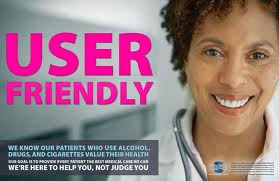Health Care for All includes health care for homeless youth- who all too often can feel stigmatized, alienated, or fearful of health systems due to past experiences. As a health care provider, you have the opportunity to change that. The following are 8 tips for providers who work with homeless youth. These tips were compiled using the feedback of Covenant House residents, best practices in the field, and the experiences of public health advocates Meredith Zolitick and Abby Dowling. Thank you to everyone who contributed!
1. Homelessness looks a lot of ways. The only way to truly know about your patient’s housing is to ask about it. Try asking “where are you staying?” and “where did you sleep last night?” Homelessness can look like couch surfing, living out of a backpack, sleeping outside or in abandoned buildings or cars, staying at a shelter, renting a motel room, or often a combination of these strategies.
Even if your patient meets the definition of homelessness, try not to use the term with patients, because it creates unnecessary stigma. Homelessness doesn’t define a person; it reflects a current housing situation. If you need to use “homeless” for medical benefits, explain how broad the definition is.
2. Explore how housing impacts healthcare access. Homelessness makes filling prescriptions and medical follow-up more challenging. Explore challenges with your patient and brainstorm solutions. Things to consider:
*Does your patient have the resources to fill a prescription?
*Do they have access to a refrigerator or consistent nutrition?
*What if their backpack, which stores medications and so much more, is stolen?
*What if they don’t feel comfortable keeping medications at the house where they are couch surfing?
*Does transportation cost or time make it tough to get to your office?
*Can they afford to buy condoms, hygiene supplies, or other items you might recommend?
*Are there security guards or police officers at your office, which might make youth with criminal justice involvement uncomfortable?
3. Take the time to build trust. Homeless youth may mistrust providers and, to quote a participant in a Seattle survey, “we kind of put up these big shields and whatnot to protect ourselves.” The number one suggested tip from Covenant House residents is that you be respectful and maintain a positive attitude. Try to remember (or write down) the details that patients tell you, so you’re not making the young person tell and retell their story, which shows consistency and care. And always explain your confidentiality policies.
“You got to be able to be people we can talk to, listen to us. It seems like they’ve had a good life, they’re doctors, so we look at them like they’re people who’ve had it handed to them. Be open-minded, try to build the relationship, break the ice, start with a simple conversation.” –Herlan
“Give me the confidence to be honest.” –Anonymous Covenant House resident
4. Practice trauma-informed care. Chances are, your patients who have experienced homelessness have also experienced trauma. This can mean your patients act in ways that seem detrimental to their health and that you don’t understand. You may be familiar with this frustrated question, which sometimes runs through providers’ heads: Why do you keep doing ________ if you know it causes ________? Trauma-informed care replaces the question “what’s wrong with you?” with “what’s happened to you?”
5. Create a safe space for LGBTQ patients. At minimum, one in five homeless youth identifies as LGBTQ. Educate yourself about LGBTQ identity and best practices for working with LGBTQ patients. Make a welcoming space when patients walk through the door—even a rainbow sticker at the front desk can make a difference for youth. During medical histories, ask questions that do not assume your patient’s gender (allow patients to use the name and pronoun of their choosing) or sexual orientation. There are some great guides for providers: here are some to whet your appetite!
6. Be specific when you talk about sex. Expand the conversation beyond whether or not your patient “uses protection.” Are you talking about protection from STIs, pregnancy, or violence? Homeless youth may be trading sex for a place to stay, and protection could mean preventing getting kicked out. Ask youth how they feel about the sex they’re having, what questions they have, what protection means for them, and what can make it hard to be “protected.” Make it clear that you won’t judge them for their answers, and that answering is optional.
7. Integrate harm reduction. A harm reduction approach explores how people can reduce various health risks through incremental changes. Harm reduction is patient-centered, allows people to choose what changes to prioritize in their lives, and acknowledges that patients who smoke, use drugs, and engage in what might be deemed “risky” sex care about their health and are doing things to protect it. Learn more about harm reduction and integrate it into your practice!

8. Honor youth as the experts in their own lives—and ask for feedback! Being homeless often means that youth have survived—and thrived—through challenges, and they may have been taking care of themselves and the people around them for a long time. Highlight their strengths (such as making the time to get to your clinic!), ask what’s worked for them in the past, and ask for feedback to make your services better.
Speaking of feedback, please be in touch with thoughts, questions, feedback, or for support: [email protected] or [email protected]. Thank you for the work that you do, and for making health care services welcoming to all!

Nice tips. Well done!!